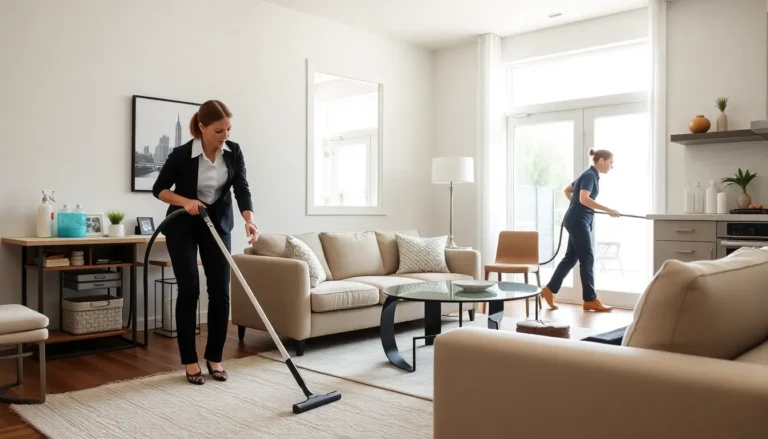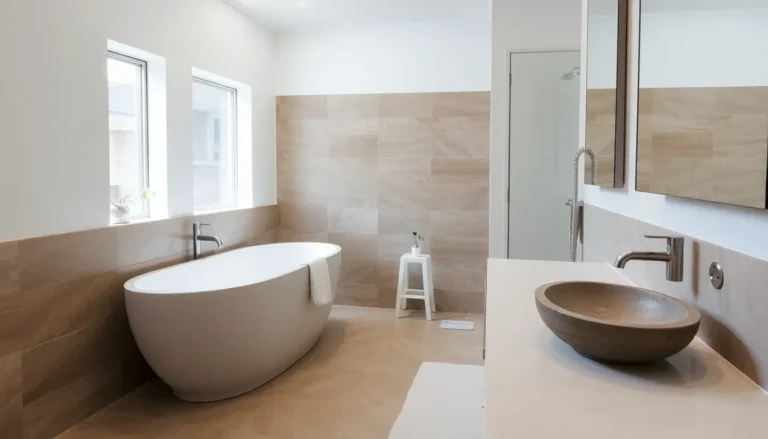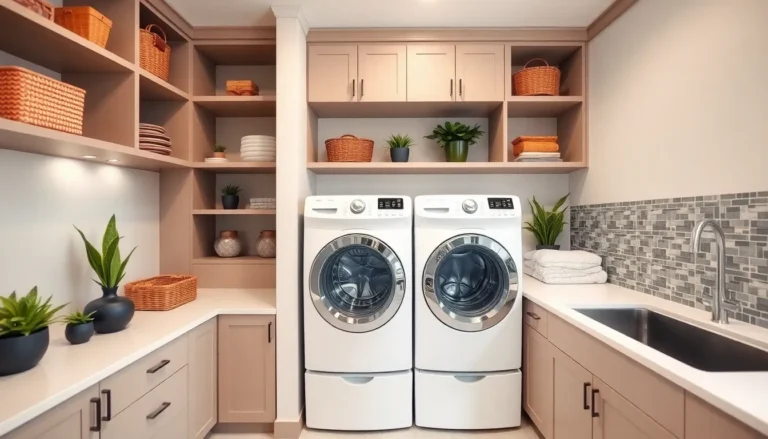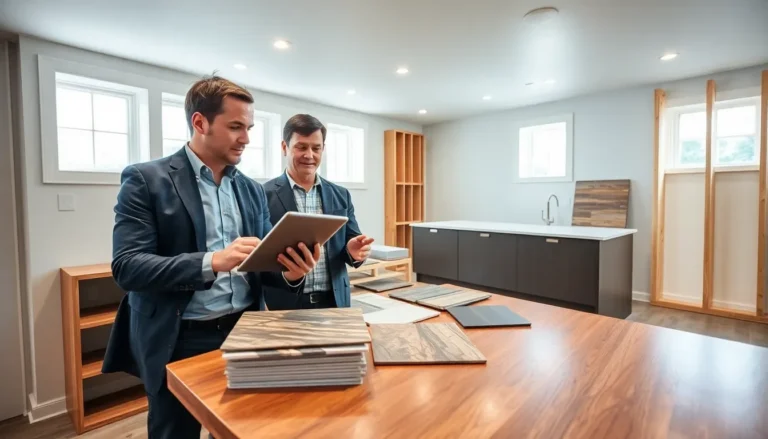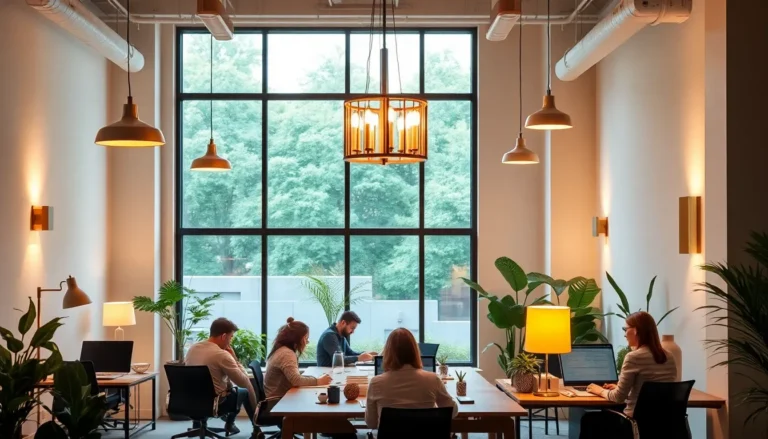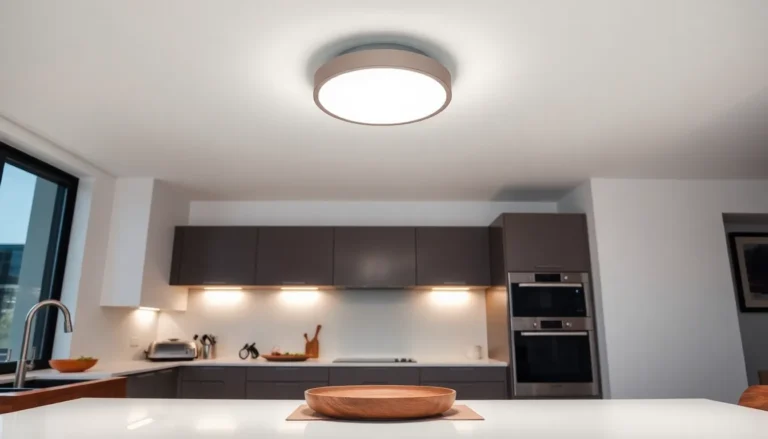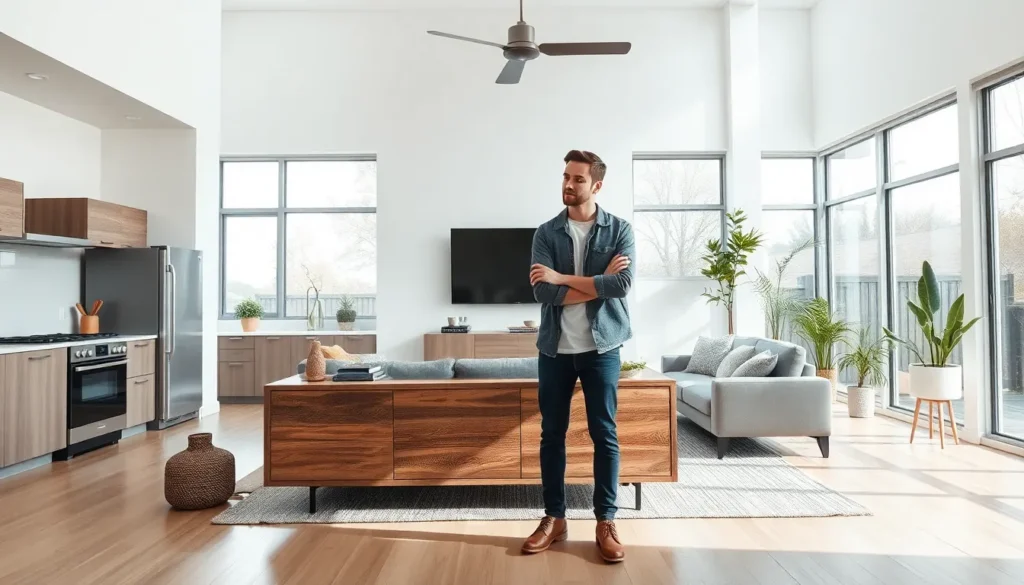Table of Contents
ToggleIn today’s fast-paced world, modern house renovation has become a popular way to breathe new life into homes. Homeowners are increasingly seeking to blend functionality with contemporary aesthetics, transforming outdated spaces into stylish retreats. This trend not only enhances the living environment but also adds significant value to the property.
With advancements in design and technology, the possibilities for renovation are endless. From open-concept layouts to energy-efficient upgrades, modern renovations focus on creating spaces that are both practical and visually appealing. Whether it’s a complete overhaul or a few strategic updates, understanding the latest trends and techniques can make all the difference in achieving a stunning transformation.
What Is Modern House Renovation?
Modern house renovation involves enhancing existing spaces to align with contemporary design principles while improving functionality. Homeowners focus on creating a balance between aesthetic appeal and practical usage, ensuring each element serves a purpose.
Adopting open-concept layouts fosters a sense of connectivity and spaciousness. Such designs cater to social interaction and flow, essential in today’s living environments.
Incorporating energy-efficient upgrades not only enhances comfort but also reduces utility costs. Upgrades may include smart home technologies, high-performance insulation, and sustainable materials, aligning with eco-friendly practices.
Renovations often emphasize minimalism, featuring clean lines, neutral color palettes, and streamlined fixtures. This approach promotes a serene atmosphere while allowing homeowners to express personal style through carefully selected decor.
Current trends also highlight multifunctional spaces, designed to adapt to various activities, such as work-from-home setups or family gatherings. These designs cater to evolving lifestyles, prioritizing versatility and convenience.
Ultimately, modern house renovation represents a critical opportunity to revamp living spaces effectively, catering to personal needs while embracing innovative design strategies.
Key Trends in Modern House Renovation
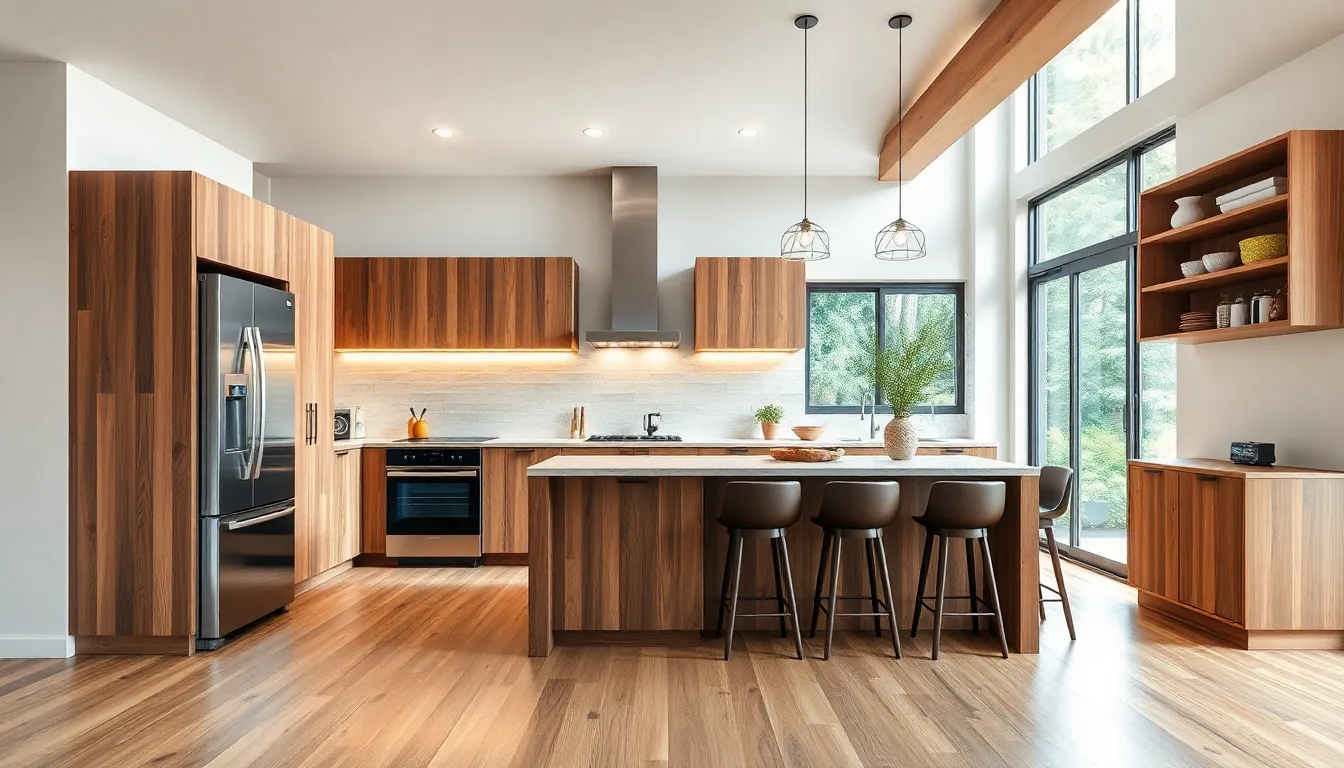
Contemporary house renovations focus heavily on sustainability and technological integration. Homeowners prioritize designs that are both environmentally friendly and equipped with modern advancements.
Sustainable Designs
Sustainable designs incorporate eco-friendly materials and energy-efficient solutions, reducing the home’s carbon footprint. Homeowners favor reclaimed wood, bamboo flooring, and low-VOC paints. These materials enhance indoor air quality while promoting sustainability. Rainwater harvesting systems and greywater recycling installations provide alternative water sources, improving resource efficiency. Solar panels and energy-efficient appliances contribute to minimized energy costs, offering long-term savings. Landscaping with native plants requires less maintenance and watering, further supporting ecological balance.
Smart Home Technology
Smart home technology elevates convenience and security in modern renovations. Homeowners utilize smart thermostats to optimize heating and cooling, ensuring efficient energy use. Automated lighting systems enhance ambiance while reducing energy expenditure through motion sensors. Security systems with smart cameras and door locks offer peace of mind, allowing remote monitoring. Voice-activated assistants streamline operations, controlling various home functions seamlessly. Integration of smart appliances, such as refrigerators and ovens, enhances cooking experiences and fosters energy conservation.
Planning Your Modern House Renovation
Effective planning sets the foundation for a successful modern house renovation. It ensures that homeowners achieve their desired outcomes while staying on track with budgets and timelines.
Budgeting for Renovation
Budgeting plays a crucial role in the renovation process. Homeowners should determine a clear budget by assessing their financial capacity and prioritizing essential updates. Key components to consider include:
- Cost Estimates: Research average rates for various renovation services in the area, such as carpentry, plumbing, and electrical work. Utilize estimates from multiple contractors to ensure a comprehensive understanding of projected costs.
- Contingency Fund: Allocate 10-20% of the total budget for unexpected expenses. Renovations often uncover hidden issues that may require additional funds.
- Financing Options: Explore financing avenues like home equity loans, personal loans, or renovation-specific loans to understand available payment methods that best fit individual financial situations.
Choosing the Right Professionals
- Experience: Evaluate the experience and track record of contractors, architects, and designers. A proven history in modern renovations demonstrates their expertise in contemporary design methods.
- References and Reviews: Seek testimonials from previous clients and check online reviews for insight into their work quality and reliability. This helps in identifying trustworthy professionals.
- Credentials: Verify licenses, insurance, and certifications, ensuring professionals comply with local regulations and standards. This helps mitigate potential risks associated with the renovation process.
- Communication: Maintain open lines of communication with chosen professionals. Discuss expectations, timelines, and any concerns to create a collaborative environment throughout the renovation project.
Essential Elements of Modern House Renovation
Modern house renovation emphasizes functional design that aligns with contemporary aesthetics. Incorporating essential elements enhances livability and overall value.
Open Floor Plans
Open floor plans facilitate a seamless flow between living areas, promoting interaction and functionality. These layouts eliminate barriers between kitchens, dining rooms, and living spaces, creating expansive environments that maximize usability. Homeowners often choose these plans to foster a sense of spaciousness and connectivity, catering to both relaxation and entertaining needs. Incorporating multipurpose furniture can further enhance the adaptability of these areas.
Natural Light Integration
Natural light integration transforms living spaces by enhancing ambiance and reducing energy costs. Large windows, skylights, and glass doors allow sunlight to permeate interiors, creating bright and inviting atmospheres. This approach not only improves the aesthetic appeal but also promotes wellbeing by reducing the reliance on artificial lighting. Strategic placement of reflective surfaces and lighter color schemes can amplify natural light, further enriching the overall environment.
Conclusion
Modern house renovation is more than just an upgrade; it’s a transformative journey that enhances both functionality and aesthetic appeal. By embracing contemporary design principles and sustainable practices, homeowners can create inviting spaces that reflect their personal style while also promoting eco-friendliness.
Effective planning and budgeting are vital to achieving successful outcomes, ensuring that renovations align with both vision and financial capacity. With the right professionals and a clear focus on innovative solutions, modern renovations can significantly improve livability and increase property value. As trends continue to evolve, the possibilities for creating a harmonious living environment are endless.

